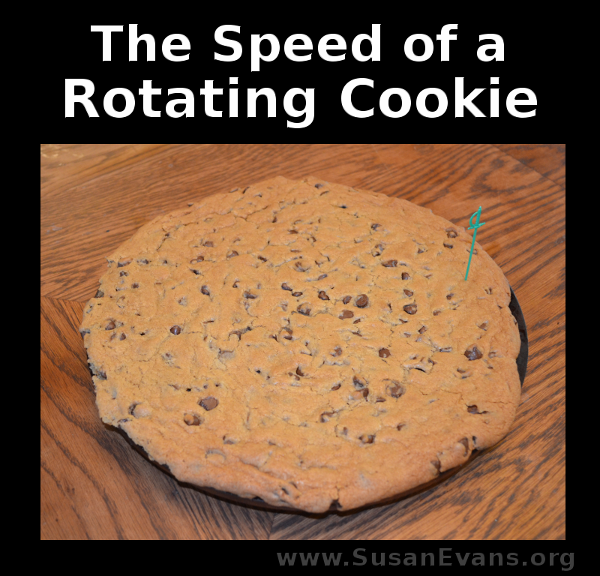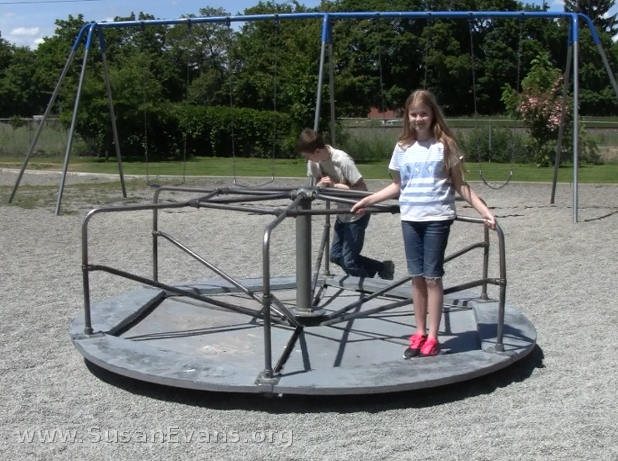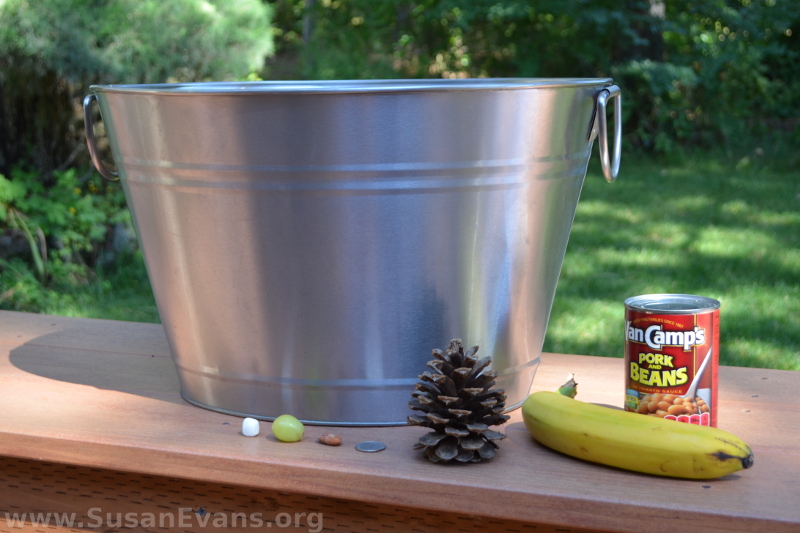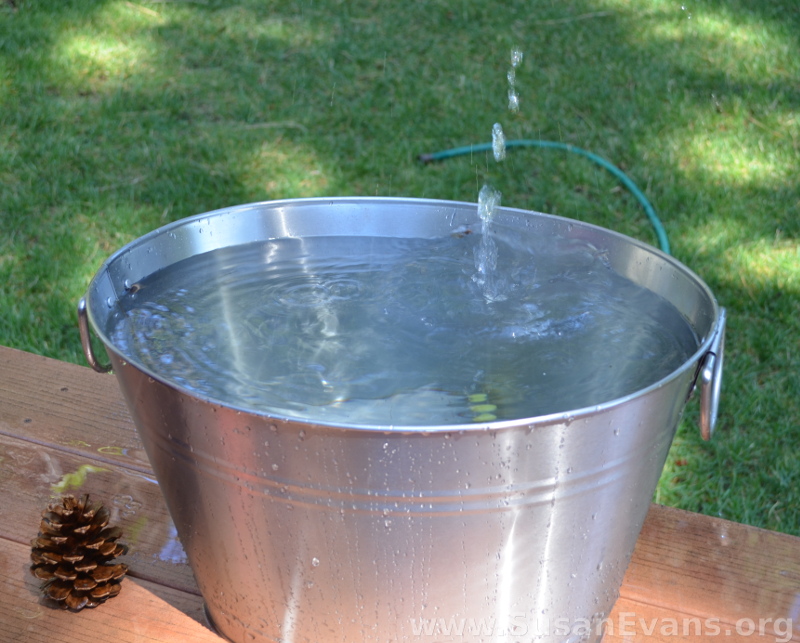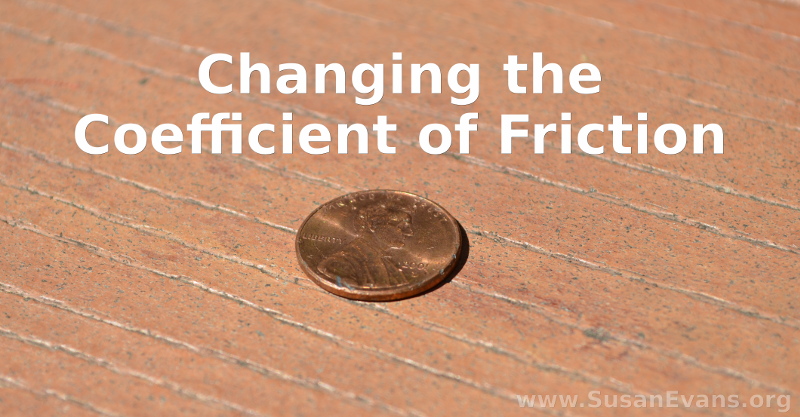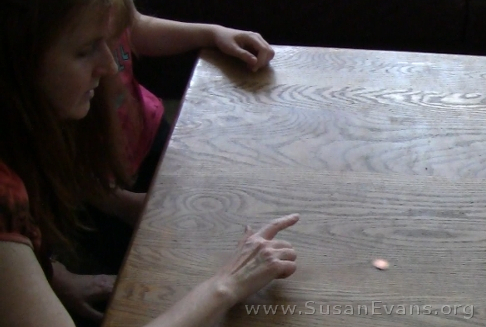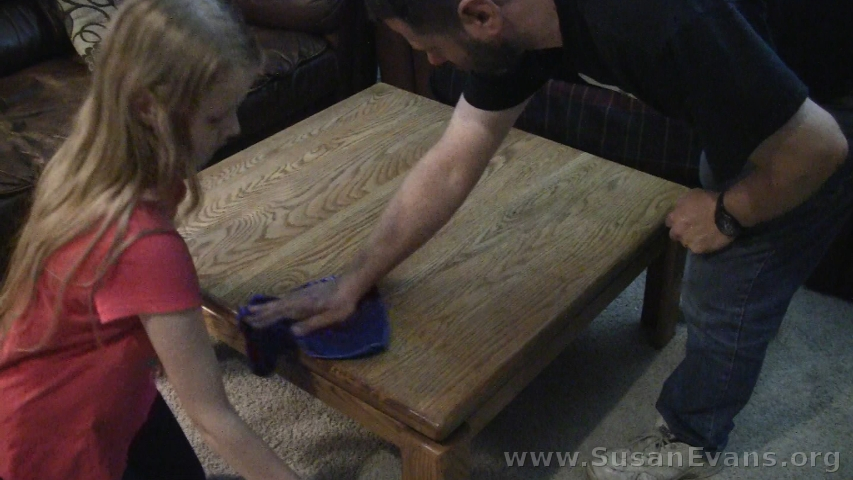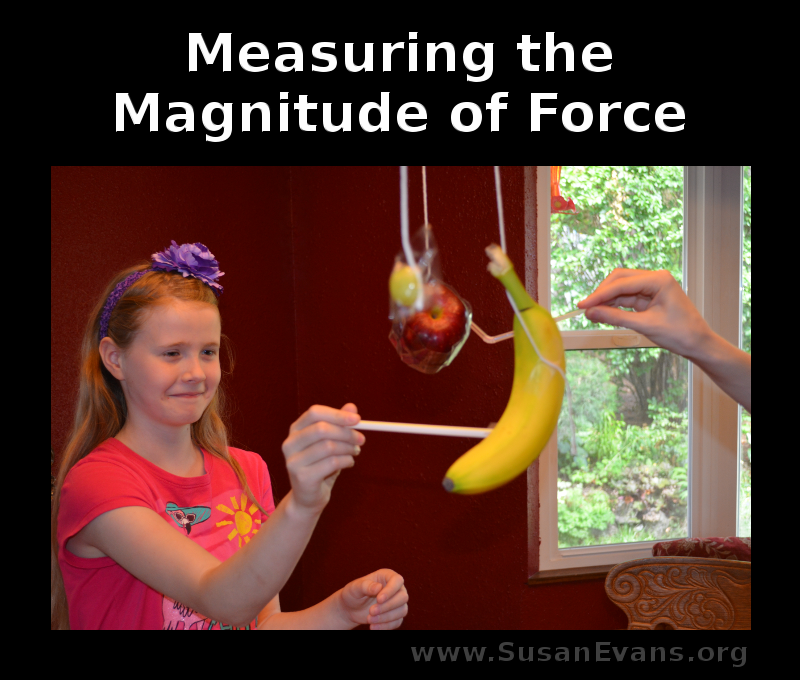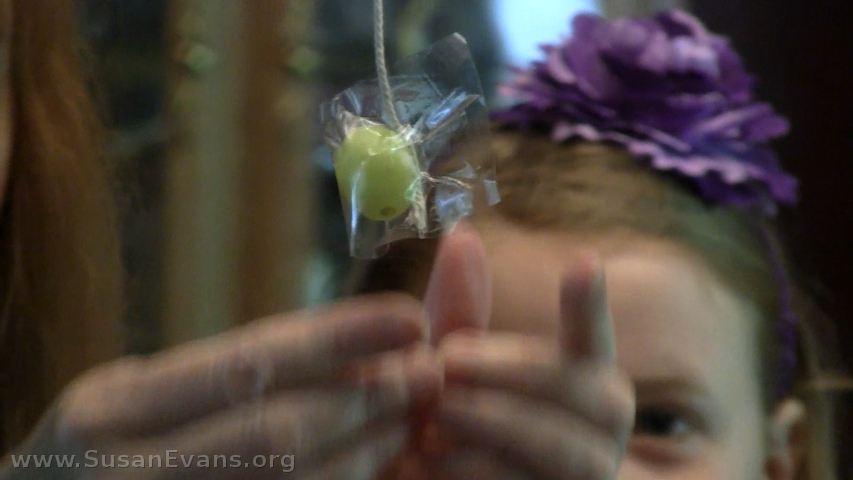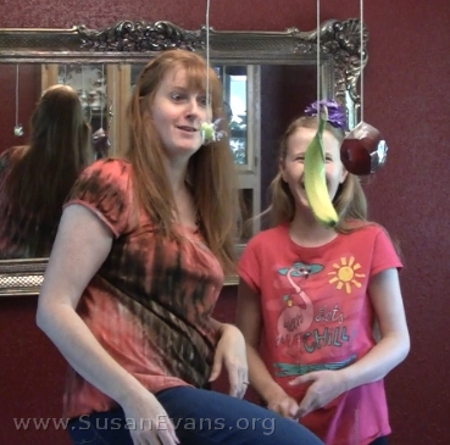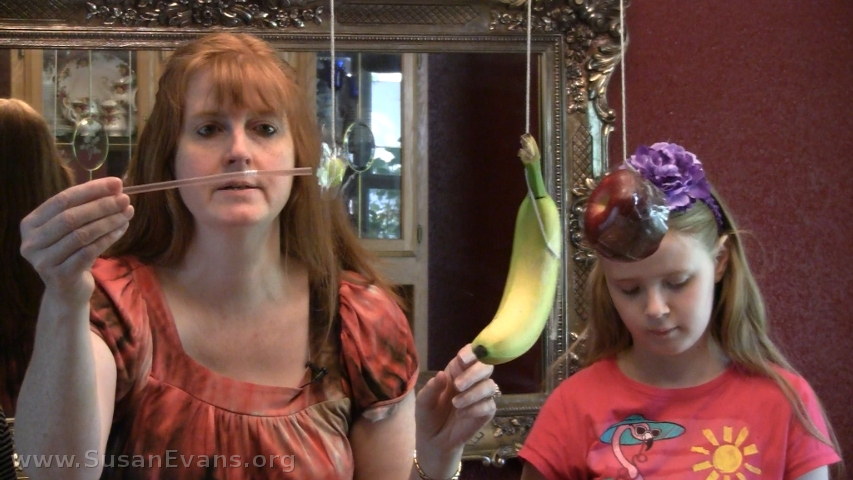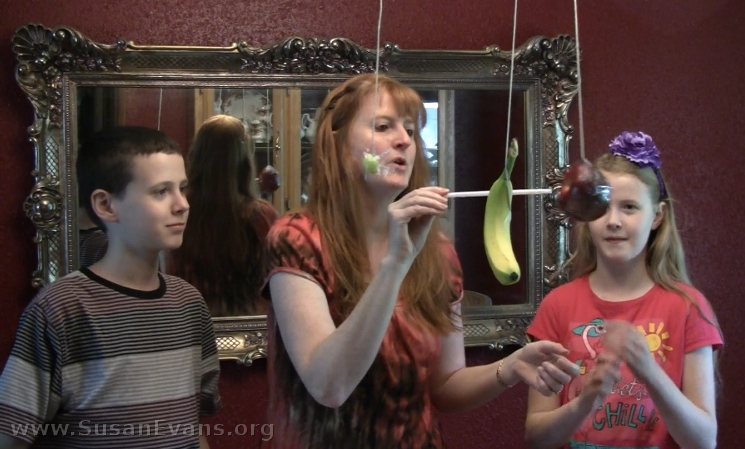Today we are baking a gigantic cookie, and then we will spin it! We are attempting to determine the speed of a rotating cookie, and I will compare it to a merry-go-round.
First you need to go into your kitchen and bake a huge chocolate chip cookie.
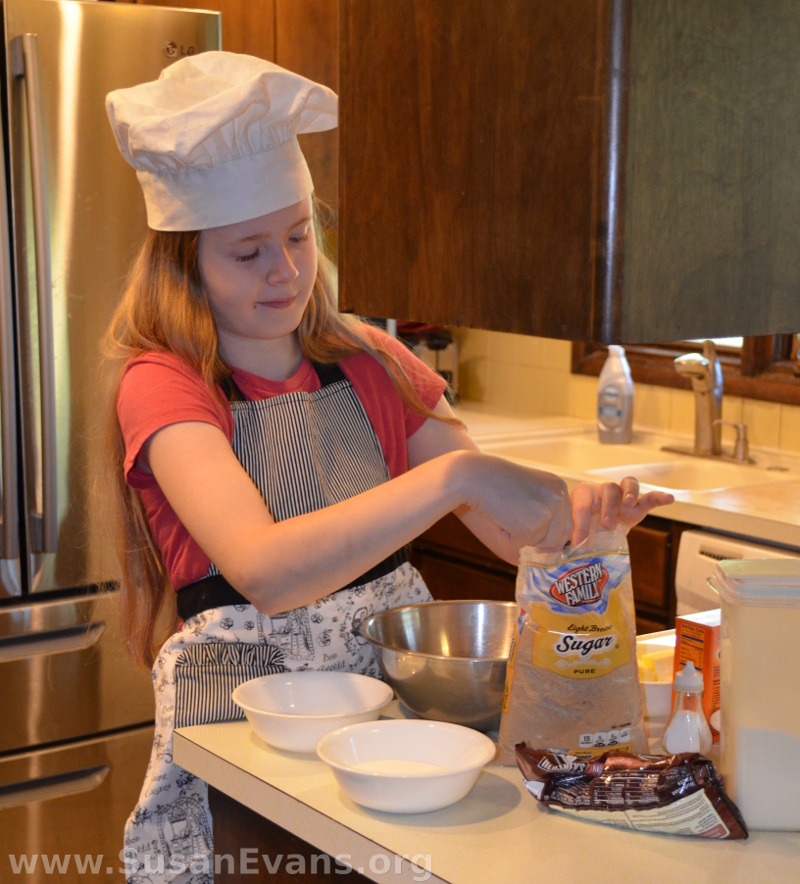 This post contains affiliate links. I was compensated for my work in writing this post.
This post contains affiliate links. I was compensated for my work in writing this post.
You can use your favorite cookie dough recipe. My daughter Rachel tells you how much of each ingredient she used to make her cookie:
This fun experiment is from Christian Kids Explore Physics by Bright Ideas Press, In the chapter on motion, the book describes how to figure out the speed of a merry-go-round. First you need to determine the circumference of the merry-go-round.
C = 2π r
The radius of the merry-go-round is 5 feet.
5 times 2 times 3.14 equals 31.4 feet. So the distance around the merry-go-round is 31.4 feet. That means every time Rachel goes around, she travels 31.4 feet.
Now we need to determine how fast the merry-go-round is going. My son pushed Rachel around as hard as he could while my other son timed 15 seconds. I counted how many times Rachel went around in 15 seconds. The answer was almost 4 times–3.75 times is more accurate, as you can see if you watched the video. 3.75 times 4 equals 15 revolutions per minute. (A minute has 4 segments of 15 seconds.)
To determine how many feet Rachel traveled in one minute while riding the merry-go-round, multiply the circumference by the speed. She traveled 471 feet per minute!
In the video I show you how to determine the speed of your rotating cookie at home, depending on how big it is and how fast you spin it. Who knew physics could be so fun and delicious!
